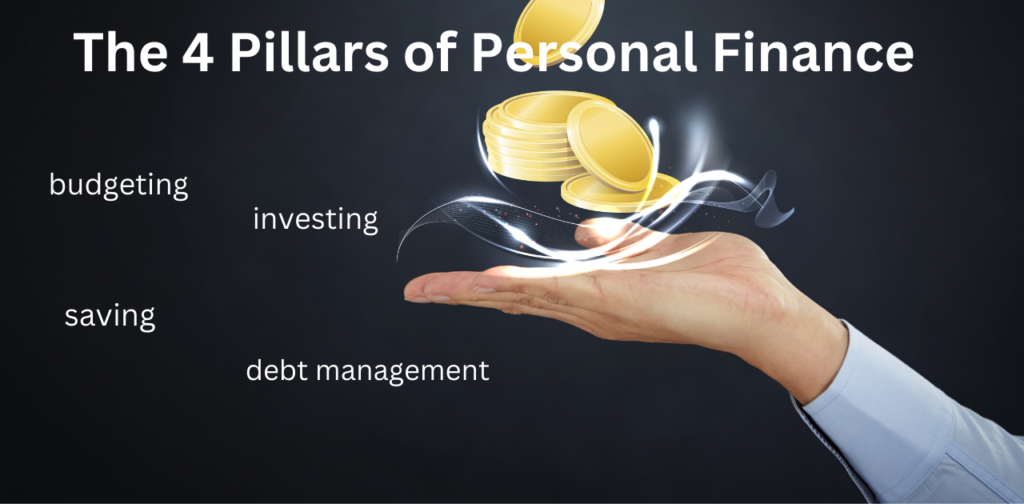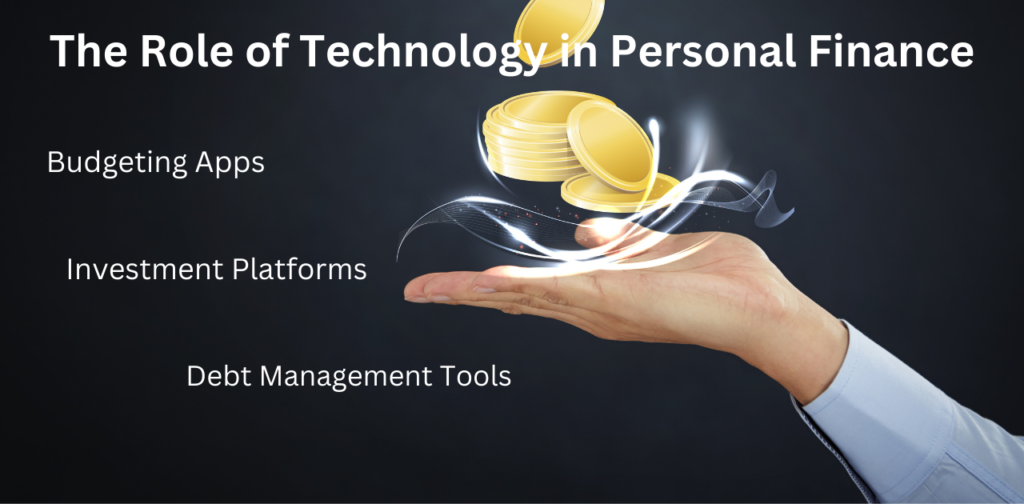Personal finance is a topic that affects everyone, yet it’s often misunderstood or overlooked. Whether you’re just starting your financial journey or looking to refine your strategy, understanding the pillars of personal finance is crucial. These pillars form the foundation of financial stability, helping you build wealth, manage debt, and secure your future. In this article, we’ll dive deep into the four key pillars of personal finance, exploring each one in detail and providing actionable tips to help you take control of your financial life.
Why Are the Pillars of Personal Finance Important?
Before we delve into the specifics, let’s take a moment to understand why these pillars of personal finance matter. Think of your financial life as a house. Without a strong foundation, even the most beautiful structure can crumble. The pillars of personal finance act as that foundation, ensuring your financial house stands tall, no matter what life throws your way.
In today’s fast-paced world, where financial decisions can feel overwhelming, these pillars of personal finance provide clarity and direction. They help you prioritize your goals, avoid common pitfalls, and create a roadmap to financial freedom. Whether you’re saving for a dream vacation, planning for retirement, or simply trying to make ends meet, mastering these pillars of personal finance will set you on the path to success.
The 4 Pillars of Personal Finance Explained
The four pillars of personal finance are budgeting, saving, investing, and debt management. Each pillar plays a unique role in your financial health, and together, they create a balanced approach to managing your money. Let’s explore each one in detail.

1. Budgeting: The Blueprint of Financial Success
Budgeting is the cornerstone of the pillars of personal finance. It’s the process of creating a plan for how you’ll spend your money each month. A budget helps you track your income and expenses, ensuring you live within your means and allocate funds toward your goals.
Why Budgeting Matters
Without a budget, it’s easy to overspend, lose track of your finances, and fall into debt. A budget gives you control over your money, allowing you to make intentional decisions about where it goes. It’s not about restricting yourself; it’s about empowering yourself to spend on what truly matters.
How to Create a Budget
- Track Your Income and Expenses: Start by listing all your sources of income and every expense, from rent to coffee runs.
- Categorize Your Spending: Divide your expenses into categories like housing, transportation, groceries, and entertainment.
- Set Financial Goals: Whether it’s saving for a down payment or paying off debt, your budget should align with your goals.
- Adjust as Needed: Life changes, and so should your budget. Regularly review and tweak it to stay on track.
Tips for Sticking to Your Budget
- Use budgeting apps like Mint or YNAB to automate tracking.
- Prioritize needs over wants.
- Celebrate small wins to stay motivated.
2. Saving: Building Your Financial Safety Net
Saving is the second pillar of the pillars of personal finance, and it’s all about setting aside money for future needs. Whether it’s for emergencies, big purchases, or long-term goals, saving ensures you’re prepared for whatever life throws your way.
The Importance of Saving
Life is unpredictable. A sudden job loss, medical emergency, or car repair can derail your finances if you’re not prepared. Saving acts as a safety net, providing peace of mind and financial security.
Types of Savings
- Emergency Fund: Aim to save 3-6 months’ worth of living expenses for unexpected events.
- Short-Term Savings: For goals like vacations or a new gadget, save in a high-yield savings account.
- Long-Term Savings: For goals like buying a house or retirement, consider options like certificates of deposit (CDs) or retirement accounts.
How to Save Effectively
- Automate your savings by setting up automatic transfers to a savings account.
- Cut unnecessary expenses and redirect that money toward savings.
- Take advantage of employer-sponsored retirement plans, especially if they offer matching contributions.
3. Investing: Growing Your Wealth Over Time
Investing is the third pillar of the pillars of personal finance, and it’s where your money starts working for you. While saving helps you preserve your money, investing helps it grow over time through compound interest and market returns.
Why Investing is Crucial
Inflation erodes the purchasing power of your money over time. By investing, you can outpace inflation and build wealth for the future. Whether it’s for retirement, your children’s education, or financial independence, investing is key to achieving long-term goals.
Types of Investments
- Stocks: Buying shares of a company, offering potential for high returns but with higher risk.
- Bonds: Lending money to a government or corporation in exchange for interest payments, offering lower risk but lower returns.
- Mutual Funds and ETFs: Pooled investments that diversify your portfolio across multiple assets.
- Real Estate: Investing in property for rental income or appreciation.
How to Start Investing
- Educate yourself about different investment options.
- Start small and gradually increase your investments as you gain confidence.
- Diversify your portfolio to spread risk.
- Consider working with a financial advisor for personalized guidance.
4. Debt Management: Breaking Free from Financial Burdens
Debt management is the fourth pillar of the pillars of personal finance, and it’s all about handling your debts responsibly. While some debt, like a mortgage or student loans, can be considered “good debt,” high-interest debt like credit cards can quickly spiral out of control.
The Impact of Debt
Debt can weigh heavily on your financial and emotional well-being. High-interest payments eat into your income, making it harder to save and invest. Effective debt management helps you regain control and work toward a debt-free life.
Strategies for Managing Debt
- Debt Snowball Method: Pay off the smallest debts first, gaining momentum as you go.
- Debt Avalanche Method: Focus on paying off high-interest debts first to save money on interest.
- Consolidation: Combine multiple debts into a single loan with a lower interest rate.
- Negotiation: Contact creditors to negotiate lower interest rates or payment plans.
Tips for Staying Debt-Free
- Avoid unnecessary debt by living within your means.
- Use credit cards responsibly and pay off the balance in full each month.
- Build an emergency fund to avoid relying on credit in times of crisis.
MUST READ: What is Public Finance? & Importance, Types in Economic Development
How the Pillars of Personal Finance Work Together
While each pillar is important on its own, their true power lies in how they work together. Budgeting helps you allocate funds toward saving and investing, while saving provides a safety net for unexpected expenses. Investing grows your wealth over time, and effective debt management ensures your financial foundation remains strong.
Think of it like a well-oiled machine. When all four pillars of personal finance are in harmony, your financial life runs smoothly, allowing you to achieve your goals and enjoy peace of mind.
Common Mistakes to Avoid
Even with a solid understanding of the pillars of personal finance, it’s easy to make mistakes. Here are some common pitfalls to watch out for:
- Neglecting an Emergency Fund: Without savings, you’re forced to rely on debt when unexpected expenses arise.
- Overspending: Failing to stick to a budget can lead to financial stress and debt.
- Ignoring Investments: Relying solely on savings means missing out on potential growth.
- Accumulating High-Interest Debt: Credit card debt can quickly spiral out of control, derailing your financial goals.
Practical Steps to Master the Pillars of Personal Finance
Ready to take control of your finances? Here are some actionable steps to get started:
- Assess Your Current Situation: Take stock of your income, expenses, savings, and debts.
- Set Clear Goals: Define what you want to achieve, whether it’s buying a home, retiring early, or paying off debt.
- Create a Plan: Use the four pillars of personal finance to create a comprehensive financial plan tailored to your needs.
- Stay Consistent: Financial success is a marathon, not a sprint. Stay committed to your plan, even when challenges arise.
MUST READ: Top Stock Market Movies and Web Series: Lessons and Inspiration
Final Thoughts: Building a Strong Financial Future
Mastering the pillars of personal finance is one of the most empowering things you can do for yourself. It’s not just about numbers; it’s about creating a life of freedom, security, and opportunity. By focusing on budgeting, saving, investing, and debt management, you can build a solid foundation for your financial future.
Remember, personal finance is a journey, not a destination. There will be ups and downs, but with the right tools and mindset, you can navigate them with confidence. Start today, take small steps, and watch as your financial house grows stronger with each passing day.
By understanding and implementing these pillars of personal finance, you’re not just managing money—you’re creating a life of abundance and peace. So, take the first step, embrace the process, and build the future you deserve.
Additional Tips for Mastering the Pillars of Personal Finance
To further enhance your understanding and application of the pillars of personal finance, here are some additional tips:
- Educate Yourself Continuously: The world of finance is ever-evolving. Stay updated with the latest trends, tools, and strategies.
- Seek Professional Advice: Sometimes, it’s beneficial to consult with a financial advisor to get personalized guidance.
- Network with Like-Minded Individuals: Join financial communities or forums to share experiences and learn from others.
- Practice Patience and Discipline: Financial success doesn’t happen overnight. Stay patient and disciplined in your approach.
Real-Life Examples of the Pillars of Personal Finance in Action
To better understand how the pillars of personal finance work in real life, let’s look at a couple of examples:
Example 1: Sarah’s Journey to Financial Freedom
Sarah, a 30-year-old marketing professional, was struggling with credit card debt and had no savings. She decided to take control of her finances by focusing on the pillars of personal finance:
- Budgeting: Sarah created a detailed budget, cutting unnecessary expenses like dining out and subscription services.
- Saving: She started setting aside 20% of her income into an emergency fund.
- Investing: Once her emergency fund was established, Sarah began investing in a diversified portfolio of stocks and mutual funds.
- Debt Management: She used the debt snowball method to pay off her credit card debt, starting with the smallest balance first.
Within three years, Sarah was debt-free, had a fully funded emergency fund, and was well on her way to building wealth through investments.
Example 2: John’s Path to Early Retirement
John, a 45-year-old engineer, wanted to retire by the age of 55. He leveraged the pillars of personal finance to achieve his goal:
- Budgeting: John meticulously tracked his expenses and allocated a significant portion of his income toward savings and investments.
- Saving: He maximized contributions to his retirement accounts and built a robust emergency fund.
- Investing: John diversified his investments across stocks, bonds, and real estate to maximize returns.
- Debt Management: He paid off his mortgage early and avoided taking on new debt.
By the age of 55, John had accumulated enough wealth to retire comfortably, thanks to his disciplined approach to the pillars of personal finance.
The Emotional Aspect of Personal Finance
While the pillars of personal finance are often discussed in terms of numbers and strategies, it’s important to acknowledge the emotional aspect of money. Financial decisions are deeply personal and can evoke feelings of stress, anxiety, and even joy.
Managing Financial Stress
Financial stress is a common experience, but it doesn’t have to control your life. Here are some tips to manage it:
- Acknowledge Your Feelings: It’s okay to feel stressed or overwhelmed. Acknowledging your emotions is the first step toward managing them.
- Focus on What You Can Control: While you can’t control everything, you can control your spending, saving, and investing habits.
- Seek Support: Talk to a trusted friend, family member, or financial advisor about your concerns.
Celebrating Financial Wins
On the flip side, achieving financial milestones can bring immense joy and satisfaction. Celebrate your wins, no matter how small. Whether it’s paying off a credit card or reaching a savings goal, take a moment to acknowledge your progress and reward yourself.
The Role of Technology in Personal Finance
In today’s digital age, technology plays a significant role in managing the pillars of personal finance. From budgeting apps to robo-advisors, there are countless tools available to help you stay on track.

Budgeting Apps
Apps like Mint, YNAB (You Need A Budget), and Pocket Guard make it easy to track your income and expenses, set financial goals, and monitor your progress.
Investment Platforms
Online platforms like Robinhood, E*TRADE, and Betterment allow you to invest in stocks, bonds, and mutual funds with just a few clicks.
Debt Management Tools
Tools like Debt Payoff Planner and Undebt.it help you create and track debt repayment plans, making it easier to stay on top of your payments.
Financial Education Resources
Websites like Investopedia, NerdWallet, and The Balance offer a wealth of information on personal finance topics, helping you make informed decisions.
The Future of Personal Finance
As we look to the future, the pillars of personal finance will continue to evolve. Emerging trends like cryptocurrency, sustainable investing, and financial wellness programs are shaping the way we think about money.

Cryptocurrency
Cryptocurrency has gained significant attention in recent years, offering new opportunities for investment and financial transactions. While it comes with risks, it’s worth exploring as part of a diversified investment strategy.
Sustainable Investing
Sustainable investing focuses on generating financial returns while also creating positive social and environmental impact. This approach aligns with the values of many modern investors.
Financial Wellness Programs
Employers are increasingly offering financial wellness programs to help employees manage their finances. These programs often include resources for budgeting, saving, investing, and debt management.
Conclusion: Your Path to Financial Mastery
The pillars of personal finance—budgeting, saving, investing, and debt management—are the foundation of a secure and prosperous financial future. By understanding and applying these principles, you can take control of your money, achieve your goals, and build a life of abundance and peace.
Remember, personal finance is a journey, and it’s never too late to start. Whether you’re just beginning or looking to refine your strategy, the pillars of personal finance provide a roadmap to success. So, take the first step today, embrace the process, and watch as your financial future unfolds with confidence and clarity.
By mastering the pillars of personal finance, you’re not just managing money—you’re creating a life of freedom, security, and opportunity. So, start today, take small steps, and build the future you deserve.
Riyo is a Digital Marketing expert with specialization in SEO and Market Analysis. He has hands-on experience in keyword research, on-page & off-page SEO, and data-driven marketing strategies. Riyo helps businesses boost their online visibility and grow through smart digital tactics.


